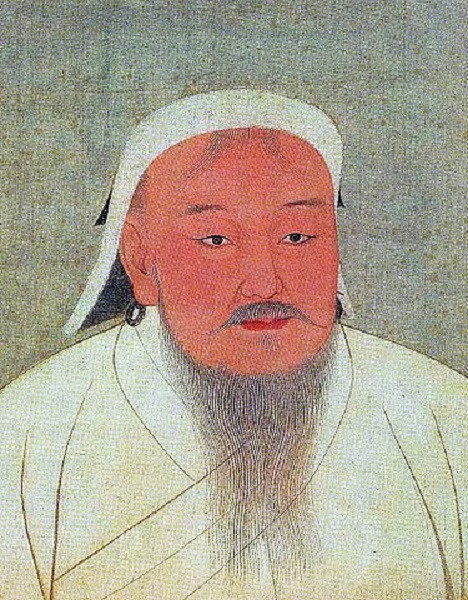Genghis Khan challenged for title of world's most prolific seed spreader

Genghis Khan is believed to be related to about 0.5% of all men living today after having sired hundreds of children during his life – but his genetic legacy has now been challenged by a number of men from history.
The Mongolian ruler died in 1227. The location of his final resting place is unknown, so there is no genetic evidence.
However, a study from 2003 found that millions of men shared an almost identical Y-chromosome sequence, with the lineage traced back to Mongolia about 1,000 years ago. During his life, Khan is believed to have fathered hundreds if not thousands of children – so experts deduced he was the individual from which the line came from.
However, scientists have now identified 10 other men who have left a strong footprint in the Y chromosomes of modern man.
Mark Jobling, a geneticist at the University of Leicester, and Patricia Balaresque, of Paul Sabatier University in Toulouse, published their findings in the European Journal of Human Genetics.
A Y-chromosome lineage traces a single paternal line in a much bigger family tree. To leave a significant legacy, it takes multiple generations moving out over a wide geographical area, Nature magazine reports.
To do this, it normally takes powerful men living in social systems that allows them to have lots of children with multiple women.
"Lots of men have lots of sons, by chance. But what normally doesn't happen is the sons have a high probability of having lots of sons themselves. You have to have a reinforcing effect," Jobling said.
The team systematically searched for these men by analysing Y chromosomes from 5,000 men from 127 populations over Asia – focusing on this region because lots of data was already available.
They found 11 sequences shared with more than 20 of the 5,321 genomes. They then used DNA differences from random mutations to work out when each of the founding fathers lived. They were also able to trace back the geographical origin.
Along with Khan, two of the men had already been identified through previous research - Giocangga, a Qinq Dynasty ruler who died in 1582, and another belonging to the medieval Uí Néill dynasty in Ireland.
The identities of the rest of the men remains unknown, however. They came from areas spanning the Middle East to southeast Asia and date from between 2100 and 700BCE – very rough dates, the authors note.
They said ideally they need DNA from candidates or a long-dead descendant to prove their identity. Tyler-Smith said: "Looking for these links is fascinating. When we did it, we were using pretty indirect lines of reasoning, and you could try and do that with each of these lineages. What I really hope is that at some point someone will find Genghis Khan's tomb and remains."
© Copyright IBTimes 2025. All rights reserved.






















